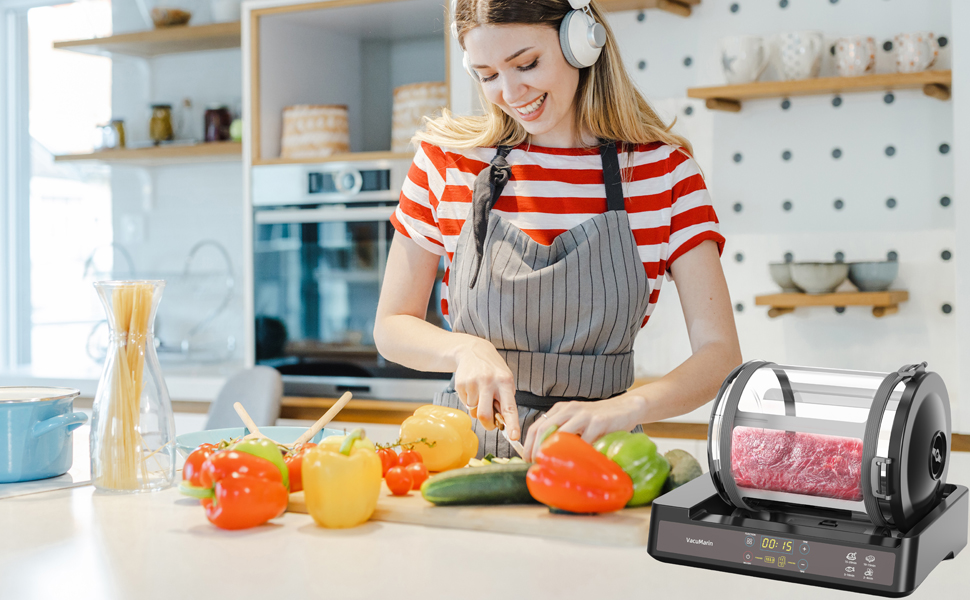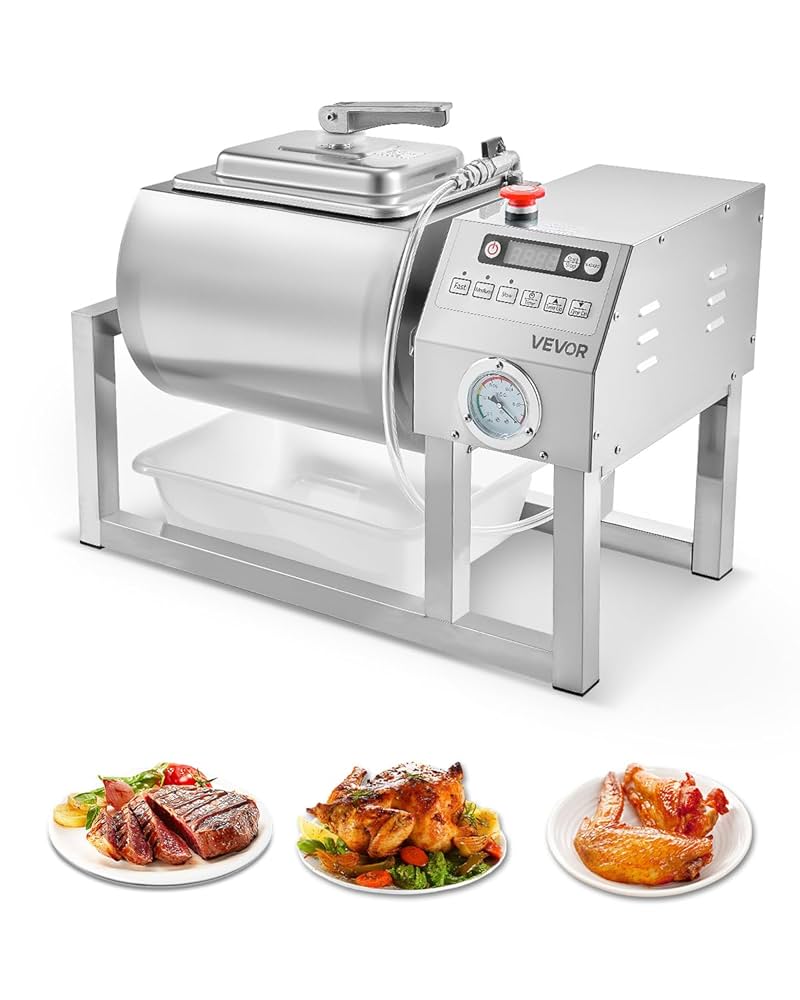10 years of experience as a food machinery equipment manufacturer
10 years of experience as a food machinery equipment manufacturer
Marination, a culinary technique cherished for centuries, involves soaking foods, typically meats, poultry, or fish, in a seasoned liquid before cooking. The primary goals are to enhance flavor, improve tenderness, and sometimes increase moisture content. Traditionally, this process can be time-consuming, requiring hours or even overnight immersion to achieve desired results. However, advancements in food processing technology have introduced more efficient methods, with vacuum tumbler marination emerging as a significant innovation for both commercial and, increasingly, dedicated home applications.

A vacuum tumbler marinator is a specialized piece of equipment designed to accelerate and improve the marination process. Structurally, it typically consists of a rotating drum or container, a vacuum pump, and a control system. Food items and the marinade are placed inside the drum. The vacuum pump then extracts air from the drum, creating a low-pressure environment. Simultaneously, or in programmed intervals, the drum tumbles or rotates, gently massaging the food items within the marinade.
The core principle lies in the combined action of vacuum and mechanical agitation. This technology aims to overcome the limitations of traditional static marination, offering a more controlled, rapid, and thorough infusion of flavors and functional ingredients into food products.
The effectiveness of vacuum tumbler marination is rooted in fundamental physical principles that alter the interaction between the food product and the marinade.
The Role of Vacuum: When a vacuum is applied to the chamber containing the food and marinade, the air within the food’s cellular structure and interstitial spaces is drawn out. This removal of air creates a pressure differential between the inside of the food and the surrounding marinade. As the vacuum is released, or during the tumbling process under vacuum, the marinade is actively drawn into the void spaces created within the food product. This is significantly more effective than passive diffusion, which governs traditional marination. The reduced pressure can also cause muscle fibers to expand slightly, creating more pathways for marinade uptake.
The Impact of Tumbling: The mechanical action of tumbling serves multiple purposes. Firstly, it ensures continuous and even exposure of all food surfaces to the marinade. This prevents areas from being over or under-marinated. Secondly, the gentle massaging effect of the food items falling and rubbing against each other and the drum’s baffles (if present) helps to further break down muscle fibers. This physical action can tenderize the product and create micro-channels that facilitate deeper marinade penetration. The constant movement also helps to distribute the absorbed marinade more uniformly throughout the product, rather than just concentrating it on the surface.
The application of vacuum tumbling technology in marination offers a range of compelling advantages over conventional methods:
Vacuum tumbler marinators are versatile and find applications in various sectors of the food industry, catering to different scales of operation.
Commercial Food Processing: Large-scale meat, poultry, and seafood processors rely heavily on vacuum tumblers to ensure product consistency, maximize throughput, and control costs. They are integral for producing items like marinated chicken pieces, deli meats, sausages, and value-added seafood products.
Restaurants and Catering Services: High-volume restaurants and catering businesses benefit from the speed and efficiency of vacuum tumblers, allowing them to prepare large batches of marinated items quickly and consistently, meeting customer demand without extensive pre-planning.
Butcher Shops and Delicatessens: Modern butcher shops and delis use vacuum tumblers to create premium, value-added products. This allows them to offer customers uniquely flavored and tenderized cuts, enhancing their product range and profitability.

Specialized Food Production: Producers of items like jerky or other processed meat snacks also utilize vacuum tumblers to ensure deep flavor infusion and consistent texture before drying or cooking processes.
While historically more common in commercial settings due to size and cost, smaller, more compact models are also available, making them accessible to serious home cooks, barbecue enthusiasts, or small-scale artisanal producers who seek professional-level marination results.
When considering or utilizing a vacuum tumbler marinator, several factors should be taken into account to ensure optimal performance and suitability:
The contrast between vacuum tumbling and traditional static marination is stark, highlighting the technological leap the former represents.
Time Efficiency: Traditional marination is a passive process relying on diffusion, taking many hours, or even days. Vacuum tumbling is an active process, reducing this time to minutes or a few hours. This is a reduction of up to 90% in processing time in many cases.
Depth and Evenness of Marinade Penetration: Static marination often results in surface-level flavoring, with limited penetration into thicker cuts. Vacuum tumbling ensures deeper, more uniform penetration throughout the muscle, leading to a consistently flavored product.
Marinade Uptake and Retention: Vacuum tumblers typically achieve a higher percentage of marinade pickup by the product. The process also helps in better retention of this absorbed marinade during handling and cooking, leading to a more succulent and flavorful end product.
Tenderness: While some marinades have enzymatic tenderizers, the mechanical action of tumbling itself physically contributes to tenderizing meat, an effect not achieved by static soaking.
Process Control: Vacuum tumblers offer a higher degree of control over the marination process through programmable cycles, vacuum levels, and tumbling speeds, allowing for tailored treatments for different products and desired outcomes. Traditional methods offer far less control.
Vacuum tumbler marination stands as a testament to how technology can refine and enhance traditional culinary processes. By leveraging the principles of vacuum pressure and mechanical action, these machines offer a significantly faster, more consistent, and effective method for infusing flavor and tenderness into a wide array of food products. The benefits, ranging from improved product quality and consistency to increased operational efficiency and yield, make vacuum tumblers an invaluable tool in modern food preparation, particularly within commercial and professional culinary environments. As the technology becomes more accessible, its principles continue to redefine expectations for marinated food products, delivering superior taste and texture that were once achievable only through lengthy and less predictable methods.

